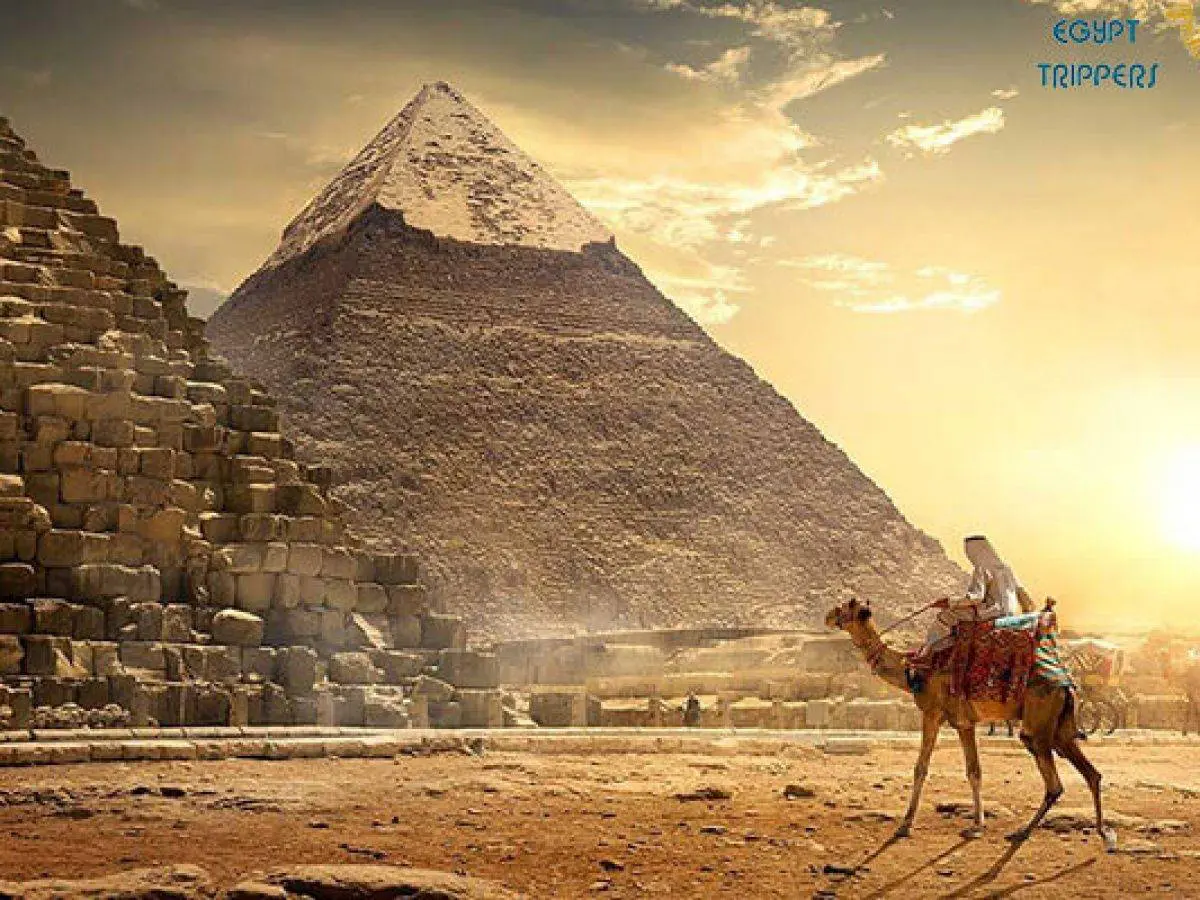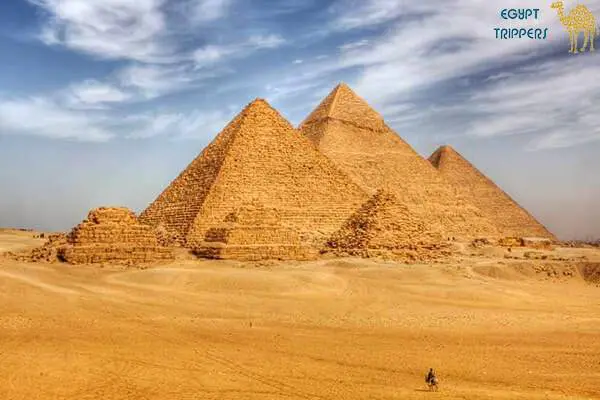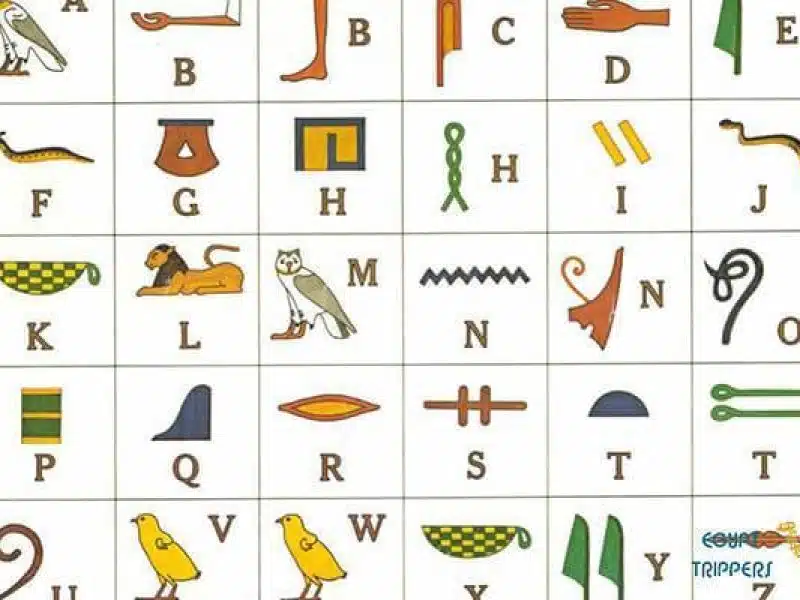Pyramids of Giza.. Facts about one of the Seven Wonders

The Pyramids of Giza are one of the Seven Wonders of the Ancient World, and they have stood for over 4,500 years. I’ll let you in on some lesser-known facts about these ancient structures that will blow your mind!
The pyramids of Giza are an incredible sight. However, many people do not know much about them and I am going to tell you 22 facts that might surprise you!
About the Pyramids of Giza
- Ancient Egyptians built more than 130 pyramids, with the three most famous being Cheops (The Great Pyramid), Chephren, and Mycerinus.
- The oldest and sole remaining intact wonder of the Seven Wonders of the Ancient World is The Pyramids at Giza. They were once included on a list with Lighthouse of Alexandria, Colossus of Rhodes, Statue Of Zeus At Olympia – which no longer exist today – along with scattered remains from Temple Of Artemis in Turkey.
- Historians estimate that over 100,000 people were involved in the construction of the Pyramids at Giza. They believe they may not have been slaves as once thought but rather paid workers because their families would continue to be provided for even after death if they died while working on it. It is still a mystery how two million stone blocks ranging from 2-50 tons each could have been transported and placed with such accuracy without today’s technology which makes this one of history’s greatest mysteries.
- The Great Pyramid has long sparked curiosity among historians who are fascinated by its size and precision when considering what was possible during ancient times before modern-day machinery existed making transportation techniques unclear until now!
- One fact is the pyramid was never completed.
- It took 20 years just for workers to build a ramp so they could work on each level as they went up instead of having multiple ramps which would have been inefficient for both angles – building & transportation.
- All in all, there were more than 2 million stones used around the base with some weighing over 50 tons!
- All pyramids in Egypt are situated on the west bank of the River Nile because it’s where they believe that every day at sunset, symbolizes when people enter their afterlife.
- Generations of visitors to the Pyramids in Giza, Egypt may be surprised to learn that one of these great obelisks was once covered with glimmering white limestone. However, over time this casing has slowly disappeared after becoming loosened by earthquakes and crumbling away. The Pyramids at Giza were once polished so completely they would reflect sunlight like a mirror—until nature destroyed them bit by bit. Generations visiting might not even know what it looked like underneath all those fallen or shattered stones scattered around their feet!
- Did you know that there are 138 pyramids in Egypt? The oldest is from 2400 BC while the newest was built by King Tutankhamen.
- The temperatures inside the pyramids remain a constant 20 C – average earth temperature. Despite the scorching heat, which can be felt in Egypt during the summer months, this phenomenon remains inexplicable for many scientists and researchers.
- Despite the fact that ancient Egyptians and their writing are often associated with pyramids, there are no hieroglyphics found inside of the Great Pyramid.
- The main chamber of the Great Pyramid contains a large granite coffin that seems perfectly normal at first glance. The coffer is made out of one solid piece and it would be impossible to fit down the passageway you just squeezed through, leading historians and archaeologists to believe that this was built around the coffin rather than brought inside.
- The Egyptians were ahead of their time in the construction of the cornerstones for pyramid foundations. They built them with ball and socket constructions to withstand earthquakes or heat expansion which was discovered by modern engineers.
- According to reports, the Great Pyramid once had a massive twenty-ton door that could be pushed open with ease from within but was too flush with its exterior for it to be spotted.
- The Great Pyramid of Giza, also known as the Pyramid of Khufu was built approximately in 2550-2590 BC. It is truly a monumental structure and remained to be one for many centuries until 1311 AD when Lincoln Cathedral was constructed with its impressive spire which measured about 575 feet tall.
- The weight of some blocks used to build the pyramids are in excess of 70 tons. The average weight for each stone is around 2.5 tons, but many weigh as much or more than your average elephant!
- Studies have found that the pyramids are much more than just tombs for dead rulers. There exist intricate passageways, shafts, and chambers beneath each pyramid at Giza which leads many to believe they had multiple purposes including tombs in addition to being a location of worship or even time capsules.
- The Ancient Egyptians appear to have used two constellations, the Big Dipper and Little Dipper, in order to align their pyramids with North-South. Their precision is so great that it’s within 0.05 degrees of accuracy; however, this alignment changes very slowly over time due to stars moving positions relative to one another.
- The pyramids have stood for thousands of years, and it appears that the mortar used was so strong that they were able to last this long. The estimated amount found in the analysis is said to be 500,000 tons which could explain why these massive structures still stand today.
- Sultan Al-Aziz Uthman, son of Saladin and ruler of Egypt in the 12 th century, wanted to destroy all three pyramids at Giza. After eight months and much expense, he got nowhere with his plans as workers only managed a huge gash on one side of Menkaure’s pyramid before quitting their job due to exhaustion.
- The ancient Egyptians’ ability to not only construct the Great Pyramid of Giza but also other massive structures such as temples and tombs in a short period is nothing less than amazing. While estimates vary, most modern Egyptologists believe that around 20-30 thousand experienced workers were needed for these projects which could be expanded to 50 thousand during some periods depending on the size and scale of construction work.





Leave a Reply